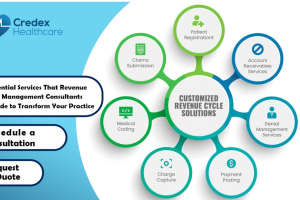What Is Flexible Staffing in Healthcare? Benefits and Best Practices

What Is Flexible Staffing in Healthcare?
In today’s rapidly evolving healthcare landscape, organizations face constant challenges in maintaining optimal staffing levels while controlling costs and ensuring quality patient care. Flexible staffing has emerged as a strategic approach that helps healthcare facilities adapt to fluctuating patient volumes, seasonal demands, and unexpected staffing shortages.
Understanding Flexible Staffing in Healthcare
Flexible staffing refers to a workforce management strategy that allows healthcare organizations to adjust their staffing levels based on patient census, acuity, and organizational needs. Rather than relying solely on permanent full-time employees, this approach incorporates various staffing options to create an agile workforce.
Key Components of Flexible Staffing Models
Variable Shift Patterns
Flexible staffing often includes:
- Variable shift lengths (4, 8, 10, or 12-hour shifts)
- Self-scheduling options
- Compressed work weeks
- Split shifts
- Flex-time arrangements
These variable patterns allow facilities to match staffing to peak demand periods while giving employees more control over their schedules.
Contingent Workforce Integration
A successful flexible staffing model typically incorporates:
- Per diem staff (as-needed employees)
- Temporary contract professionals
- Travel nurses and therapists
- Locum tenens physicians
- PRN (pro re nata or “as needed”) staff
These contingent workers supplement the core staff during high-demand periods, special projects, or to cover vacancies.
Cross-Training Initiatives
Cross-training plays a vital role in flexible staffing by:
- Enabling staff to work in multiple departments or units
- Creating “float pools” of versatile employees
- Developing multi-skilled workers who can adapt to various roles
- Reducing the need for specialized contingent staff
This versatility allows organizations to shift resources where they’re most needed at any given time.
Technology-Enabled Solutions
Modern flexible staffing relies heavily on technology:
- Predictive analytics for forecasting patient volume
- Automated scheduling systems
- Staff matching algorithms
- On-demand staffing platforms
- Remote work capabilities for certain roles
These technological tools help optimize staffing decisions and quickly fill gaps.
Benefits of Flexible Staffing in Healthcare
Operational Advantages
- Cost efficiency through matching staffing to actual needs
- Ability to quickly respond to census fluctuations
- Reduced overtime expenses
- Lower recruitment costs for specialized positions
- More efficient resource allocation
Staff Benefits
- Increased work-life balance options
- Greater schedule control
- Varied work experiences
- Reduced burnout through more flexible arrangements
- Additional earning opportunities
Patient Care Improvements
- Maintained appropriate staff-to-patient ratios
- Consistent quality of care despite census variations
- Access to specialized expertise when needed
- Reduced wait times during peak periods
- Continuity of services during staff shortages
Implementing Effective Flexible Staffing Strategies
Workforce Assessment
Start by analyzing:
- Historical patient census patterns
- Seasonal variations in demand
- Current staffing models and gaps
- Core vs. flexible staffing needs
- Department-specific requirements
Policy Development
Create clear guidelines for:
- Flexible scheduling options
- Float pool protocols
- Per diem and contingent staff utilization
- Cross-training requirements
- Self-scheduling parameters
Technology Investment
Implement systems for:
- Predictive staffing analytics
- Automated scheduling
- Workforce management
- Staff communication
- Performance tracking
Staff Engagement
Ensure success through:
- Clear communication about flexible options
- Training for managers on flexible staffing principles
- Staff input on scheduling preferences
- Recognition of flexible workers’ contributions
- Regular evaluation of staff satisfaction
Challenges and Considerations
While flexible staffing offers many benefits, healthcare organizations should be aware of potential challenges:
- Ensuring consistent quality of care across various staff types
- Managing the onboarding and training of contingent workers
- Maintaining team cohesion with varying staff compositions
- Addressing union or regulatory constraints
- Balancing flexibility with appropriate continuity of care
The Future of Flexible Staffing in Healthcare
As healthcare continues to evolve, flexible staffing will likely become even more sophisticated:
- AI-powered staffing optimization
- Virtual care teams supporting in-person staff
- Micro-credentialing to enable greater staff versatility
- Gig economy platforms specifically for healthcare professionals
- Hybrid roles combining remote and on-site responsibilities
Conclusion
Healthcare staffing solutions play a vital role in helping medical facilities adapt to changing workforce needs while maintaining high standards of care.
Flexible staffing represents a strategic approach to healthcare workforce management that balances operational efficiency, staff satisfaction, and quality patient care. By thoughtfully implementing flexible staffing models, healthcare organizations can better navigate the challenges of fluctuating demands, staffing shortages, and budget constraints while creating more adaptable work environments for healthcare professionals.
As the healthcare landscape continues to change, organizations that master flexible staffing will be better positioned to thrive amid uncertainty, delivering consistent care while supporting sustainable workforce practices.



















